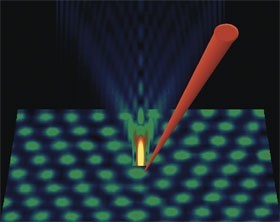For the convenience of new readers of Soft Machines, here’s a quick summary of my personal positions on the question of the feasibility of the variety of nanotechnology proposed by Dr K. Eric Drexler in his book Nanosystems. Many of the arguments are made in my book Soft Machines; I’ve discussed some of these issues in my blog in the last few months, and I’ll get round to going into more detail about some of the others in the New Year.
Yes. As pointed out by Drexler in his 1986 book Engines of Creation, Nature, in cell biology, gives us many examples of sophisticated machines that operate on the nanoscale to synthesise new molecules with great precision, to process information and to convert energy. We know, therefore, that radical nanotechnology (using this term to distinguish these sorts of fully functional nanoscale devices and machines from the sorts of incremental nanotechnology involved in making nanostructured materials) is possible in principle; the question is how to do it in practise.
Obviously not, since cell biology constitutes one radical nanotechnology that is quite different in its design principles to the scaled-down mechanical engineering that underlies Drexler’s vision of “molecular nanotechnology”, or MNT. One can imagine an artificial nanotechnology that uses some of the same operating principles and design philosophy as cell biology, but executes them in synthetic materials (as discussed in Soft Machines). Undoubtedly other approaches to radical nanotechnology that have not yet been conceived could work too. In comparing different potential approaches, we need to assess both how easy in practise it is going to be to implement them, and what their ultimate capabilities are likely to be.
No. It’s a carefully written book that reflects well the state of science in relevant fields at the time of writing. Drexler’s proposals for radical nanotechnology do not obviously break physical laws. There are difficulties, though, of two types. Firstly, in many cases, Drexler used the best tools available at the time of writing, and makes plausible estimates in the face of considerable uncertainty. Since then, though, nanoscale science has considerably advanced and in some places the picture needs to be revised. Secondly, many proposals in Nanosystems are not fully worked out, and many vital components and mechanisms remain at the level of “black boxes”.
The Center for Responsible Nanotechnology writes “A fabricator within a decade is plausible – maybe even sooner”. I think this timeline would be highly implausible even if all the underlying science was under control, and all that remained was the development of the technology. But the necessary science is very far from being understood. Firstly, there are important uncertainties about the effect on the proposed mechanisms, based as they are on the scaling down of macroscopic mechanical engineering principles, of ubiquitous features of nanoscale physics such as strong surface forces and Brownian motion. This will be particularly serious for devices intended to work in ambient conditions, rather than at very low temperatures at ultra-high vacuum, and I believe that the problems this will cause are seriously underestimated by proponents of MNT. Secondly, there is currently a huge gap in the implementation pathway. Even proponents of MNT disagree on the best way to reach their goal from our current level of technology. Drexler favours soft and biomimetic approaches (see both Nanosystems, and his letter to Physics World responding to my article), though the means of moving from soft to hard systems remains unclear. Robert Freitas and Ralph Merkle favour a more direct route using diamondoid mechanosynthesis; see the ongoing discussion with Philip Moriarty here for the difficulties that this proposal may face. In conclusion, even if diamondoid-based nanotechnology does not break any physical laws in principle, I believe in practise that it will be very much more difficult to implement than its proponents think.
This depends what you want to use the technology for. Much of the emphasis from proponents of MNT is on using the technology to manufacture artefacts. But arguably the impacts of nanotechnology will be much more important and far-reaching in areas like information processing, energy storage and transduction, and medicine, where the benefits of diamond as a structural material will be much less relevant. In these areas, evolutionary nanotechnology and other approaches to radical nanotechnology, like soft nanotechnology and bio-nanotechnology, may have a greater impact on a much shorter timescale.
Not necessarily. See this post –Even if Drexler is wrong, nanotechnology will have far-reaching impacts – for a discussion.
